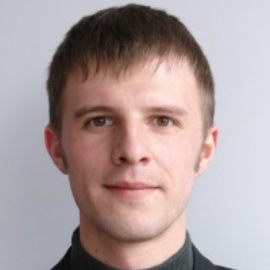International Journal of Intelligent Systems and Applications (IJISA)
IJISA Vol. 10, No. 1, 8 Jan. 2018
Cover page and Table of Contents: PDF (size: 636KB)
Development and Implementation of the Technical Accident Prevention Subsystem for the Smart Home System
Full Text (PDF, 636KB), PP.1-8
Views: 0 Downloads: 0
Author(s)
Index Terms
Arduino microcontroller, neural network, models, Petri net, smart home system, home automation
Abstract
The structure of the technical accident prevention subsystem for the smart home system has been developed in the article. The subsystem model based on Petri network, model based on neural network and physical model using the Arduino microcontroller have been realized in the development process. The subsystem research results with the use of the developed models, soft- and hardware tools are also presented.
Cite This Paper
Vasyl Teslyuk, Vasyl Beregovskyi, Pavlo Denysyuk, Taras Teslyuk, Andrii Lozynskyi, "Development and Implementation of the Technical Accident Prevention Subsystem for the Smart Home System", International Journal of Intelligent Systems and Applications(IJISA), Vol.10, No.1, pp.1-8, 2018. DOI:10.5815/ijisa.2018.01.01
Reference
[1]M. Chan, D. Esteve, C. Escriba, E. Campo, “A review of smart homes—Present state and future challenges.” Computer Methods and Programs in Biomediscine, Vol. 91, pp. 55-81, 2008.
[2]C. Wilson, T. Hargreaves, R. Hauxwell-Baldwin, “Benefits and risks of smart home technologies”, Energy Policy, Vol. 103, pp. 72–83, 2017.
[3]N. Noury, G. Virone, P. Barralon, J. Ye, V. Rialle, J. Demongeot, “New trends in health smart homes” in Proc. of the 5th International Workshop on Enterprise Networking and Computing in Healthcare Industry (Healthcom '03), June 2003, pp. 118–127.
[4]Y. Liu, B. Qiu, X. Fan, H. Zhu, B. Han, “Review of Smart Home Energy Management Systems.”, Energy Procedia, Vol. 104, pp. 504 – 508, 2016.
[5]B. Danny, Hurley, “Smart Homes For Dummies”, Third Edition, John Wiley & Sons, 432 p., 2011.
[6]A. Mahmoud,. “Al-Qutayri Smart Home Systems”, Publisher: InTech, 194 p., 2010.
[7]E. I. Batov, “The distinctive features of "smart" buildings.”, Procedia Engineering, Vol. 111, pp. 103 – 107, 2015.
[8]R. Aharonov, L. Seyev, I. Meilijson, E. Ruppin “Localization of function via lesion analysis”, Neural Computing, vol.15, pp.885-913, 2003.
[9]S. Doncieux, J.-A. Meyer, “Evolution of neurocontrollers for complex systems: alternatives to the incremental approach”, in Proceedings of The Intelligence and Applications (AIA 2004), 2004b, 18.
[10]M. Jalili-Kharaajoo, R. Mohammadi-Milasi “Design of Simple Neuro-controller for Global Transient Control and Voltage Regulation of Pawer Systems”, International Journal of Control, Automation, and Systems, vol.3, no2 (cpecial edition), pp.302-307, June 2005.
[11]D. Floreano, F. Mondada, “Evolutionary Neurocontrollers for Autonomous Mobile Robots”, Neural Networks, vol.11, num.7-8, pp.1461-1478, 1998.
[12]R. Roman, J. Zhou, J. Lopez, “On the features and challenges of security and privacy in distributed internet of things”, Computer Networks, vol.57, pp. 2266–2279, 2013.
[13]S. R. Moosavi, T. N. Gia, A.-M. Rahmani, E. Nigussie, S. Virtanen, J. Isoaho, H. Tenhunen, “SEA: A Secure and Efficient Authentication and Authorization Architecture for IoT-Based Healthcare Using Smart Gateways”, Procedia Computer Science, vol.52, pp. 452 – 459, 2015.
[14]K. Thananunsophon, B. Mangalabruks, Y. Fujii, P. P. Yupapin, “Community Monitoring and Security using an Intelligent Camera in EAT Smart Grids”, Procedia Engineering, vol. 8, pp. 332–336, 2011.
[15]A. S. Elmaghraby, M. M. Losavio, “Cyber security challenges in Smart Cities: Safety, security and privacy”, Journal of Advanced Research, vol. 5, pp. 491–497, 2014.
[16]V. M. Teslyuk, V. V. Beregovskyi, A. I. Pukach, “Development of smart house system model based on colored Petri nets”, in Proc. of International Seminar/Workshop on Direct and Inverse Problems of Electromagnetic and Acoustic Wave Theory, DIPED’2013, Lviv, Ukraine, September 2013, P. 205 – 208.
[17]M. Diaz, “Petri Nets: Fundamental Models, Verification and Applications”, John Wiley & Sons, 768 p., 2010.
[18]K. Jensen, L. M. Kristensen, “Coloured Petri Nets: modelling and validation of concurrent systems”, 1st edition, Springer, 395 p., 2009.
[19]V. Teslyuk, P. Denysyuk, Hamza Ali Yousef Al Shawabkeh, A. Kernytskyy, “Developing Information Model Of The Reachability Graph”, in. Proc. of the XVth International Seminar / Workshop Of Direct And Inverse Problems Of Electromagnetic And Acoustic Wave Theory, Tbilisi, Georgia, 2010, P. 210 – 214.
[20]H. Mohamad, “Hassoun Fundamentals of Artificial Neural Networks”, MIT Press, 511 p., 1995.
[21]A. Pukach, V. Teslyuk, R. Tkachenko, R.-A. Ivantsiv, “Implementation of neural networks for fuzzy and semistructured data”, in. Proc. of the XI Intern. Conf. on The Experience of Designing and Application of CAD Systems in Microelectronics, Lviv – Polyana, Ukraine, 2011, P. 350 – 352.
[22]F. Rosenblatt, “The Perceptron: A Probabilistic Model for Information Storage and Organization in the Brain”, Cornell Aeronautical Laboratory, Psychological Review, v.65, No. 6, pp. 386—408.
[23]W. Savitch, “Absolute C++”, 4th Edition, 736 p., 2009.
[24]J. A. Kornuta, M..E. Nipper, J. Brandon, “Dixon Low-cost microcontroller platform for studying lymphatic biomechanics in vitro”, Journal of Biomechanics, 46, pp.183–186, 2013.
[25]Tariq AL-Kadia, Ziyad AL-Tuwaijrib, Abdullah AL-Omran, “Arduino Wi-Fi network analyzer”, Procedia Computer Science, 21, pp. 522 – 529, 2013.
[26]A. Z. Jidin, N. M. Yusof, T. Sutikno, “Arduino based paperless queue management system”, TELKOMNIKA (Telecommunication Computing Electronics and Control), vol.14, no.3, pp. 839 – 845, 2016.
[27]M. Banzi, “Getting Started with Arduino”, O’Reilly Media, Inc, 1-st Edition, pp. 21 – 22, 2011.




